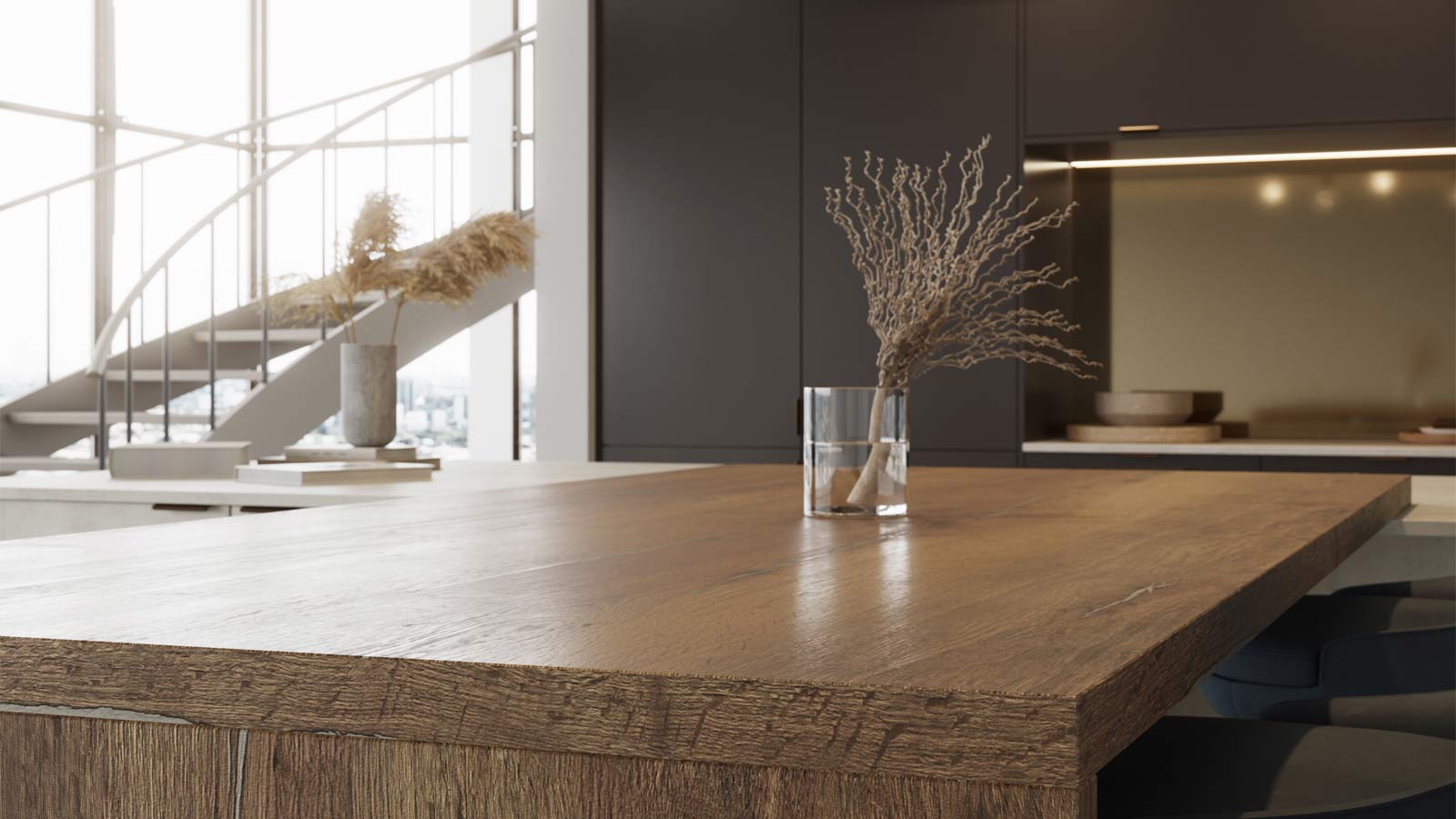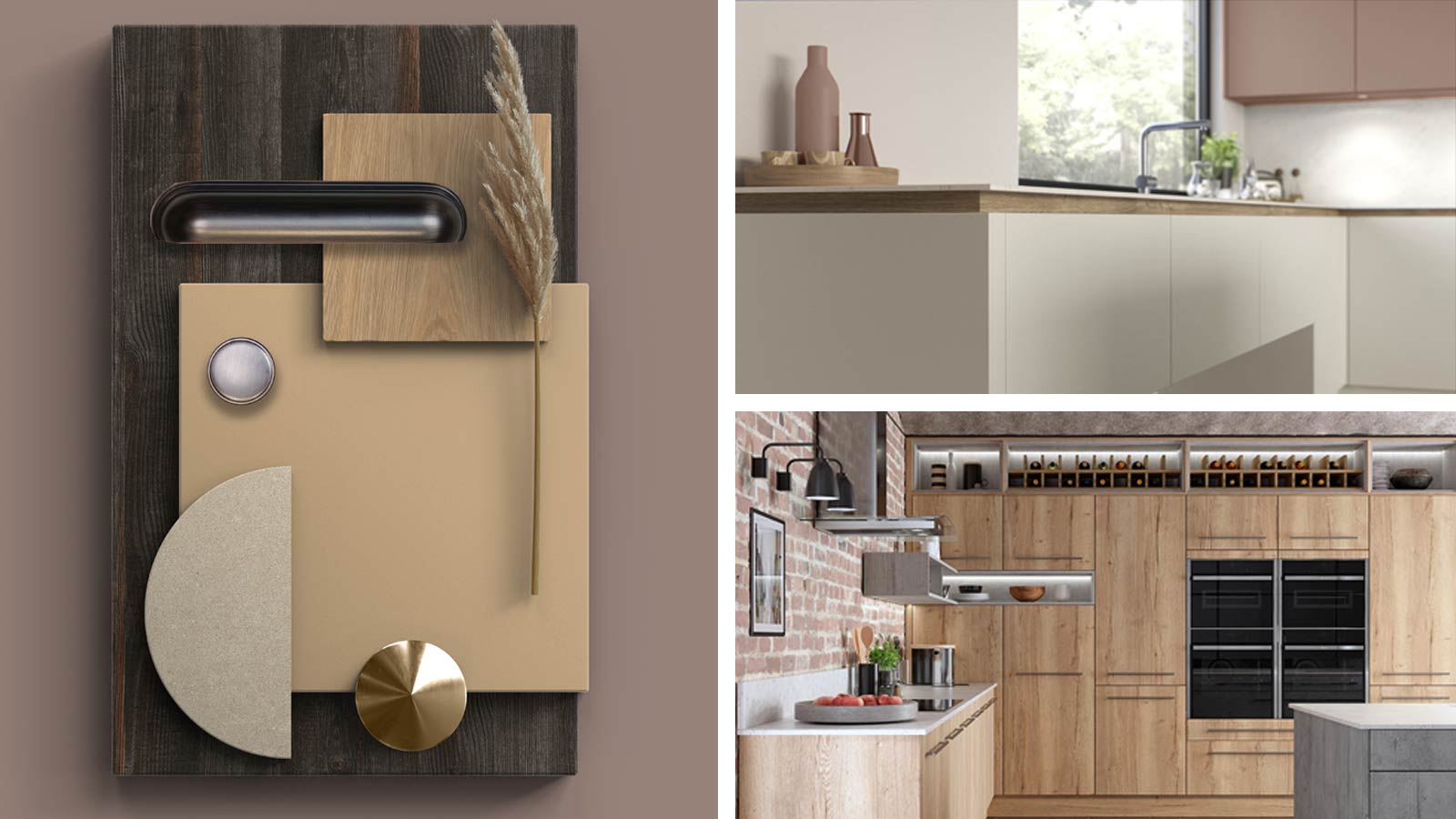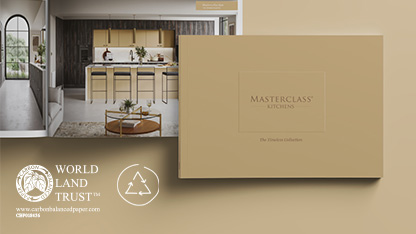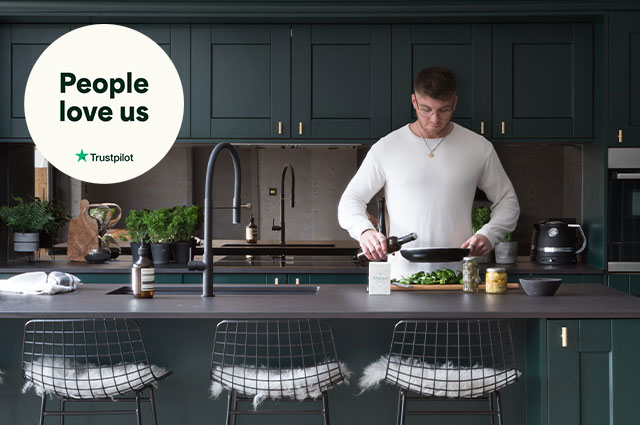5 Japandi-Style Kitchen Ideas from Japanese Philosophy
Thursday, 6th July 9:07am 2023
Browse any modern interior design magazine and you’ll encounter the term “japandi,” a trending interior design style that mixes wabi-sabi, a Japanese philosophy, with the Scandi concept hygge. Together, they promote an idea that’s easy to back: simple cosiness.
Creating hygge – the half that covers comfort – is easy; a woollen throw, comfortable furniture, an inglenook, and a few candles will do. But what about wabi-sabi? As a multi-faceted concept, it isn’t so simple. You see, “wabi” is about recognising simple beauty and “sabi” relates to life’s impermanence. Thus, a “wabi-sabi” approach appreciates objects’ simple beauty even as they patina, gnarl and age.
Thankfully, you don’t need to practice feng shui, meditate on a mountaintop or spend weeks one-inch-punching cabinet doors to enjoy japandi. A few clever kitchen design choices can help you achieve the classic japandi style and reap its wellbeing benefits, all of which we’ll explore today.

Contemplate Simplicity
Japanese kitchen ideas often spawn from a deeper ideology than we’re used to in the west, and japandi interior design is no different. Indeed, wabi teaches the importance of finding satisfaction in austerity and promotes the idea of simplifying your possessions to get you closer to nature.
Wabi-sabi experts use tea ceremonies to illustrate this ideology, explaining that tea requires minimal materialism and is ideal for bonding over life’s simple pleasures. It helps you to reflect, focus and practice servitude over material perfectionism. As the Japanese proverb goes:
“If a man has no tea in him, he is incapable of understanding truth and beauty.”
.jpg)
At Masterclass, our new Breakfast Dressers are perfectly suited for focusing and serving guests. Ultra-high quality yet understated, they complement old-money virtues and Eastern humility, despite being fully-equipped breakfast stations with enough utility to rival a luxury teahouse.
Aim for Timeless Design
Practicing sabi means appreciating aging. In terms of your kitchen, that doesn’t mean letting it deteriorate, though. Rather, it means making design choices that help you appreciate it at every stage in its lifecycle.
.jpg)
.jpg)
Take, for example, our kitchen cabinet drawers. Cheap drawers crack, their plastic dividers discolour and their boxes derail. Our drawers with wood-effect cutlery organisers, meanwhile, remain ageless and the runners are so reliable they come with a Blum lifetime guarantee.
Including features that age gracefully, like Masterclass drawers, is a great way to embrace wabi-sabi interior design. Think repurposed items, luxury biscuit tins, rustic features and antique mason jars.
Pro Tip!
Want more design tips and lifestyle advice to help you make the most of your kitchen? Become a Masterclass Kitchens Insider for free. You’ll get a library of virtual lifestyle guides just for subscribing.
Claim Your Welcome LibrarySymbolise Japanese Concepts
Japanese artisans use “kintsugi” – the art of mending fractured pottery with gold-, silver-, or platinum-powder-based lacquer – to create a product that’s more beautiful after a break. The act is an analogy for the eustress of human development, the kind of stress that improves us as we age.
.jpg)
.jpg)
Kintsugi complements the wabi-sabi style, aligning with its focus on transience – the kind that always finds perfection in possessions as they age. Incorporating it into japandi design is easy, too.
A Truffle or Midnight Pietra worktop, for example, bears a similar look that hides imperfections and still looks good with age. The same goes for Mayfield or Farmhouse Oak kitchen work surfaces. Not only do they help you double down on the wabi-sabi décor aesthetic; they also promote its ideals.
Display Kitchen Shelf Asymmetry
Japanese philosophy is all about impermanence, accepting that life is always in its final form so far and, thus, is perfectly imperfect in every moment. Japandi homes display asymmetry to reflect this fact and remind owners to appreciate the now.

Japandi design works well in this respect because the minimalist Scandi style offers the perfect blank canvas to stage asymmetry. You could, for instance, display a length of whorled driftwood on Masterclass open shelving in your kitchen, relying on the contrast to drive home the metaphor.
Available in Portland Oak or Tuscan Walnut, our wall-mounted bookshelves can hold 85kg per m2, or even more if they’re installed in sturdy furniture like a kitchen island.
Create a Natural Modern Kitchen
Once you’ve internalised wabi-sabi architecture principles and decided how to incorporate them into your kitchen, next comes the finishing touch: your colour palette. Japandi home design is natural. As such, the colours tend to align with nature. Imagine off-whites, clays, woods and earthy accessories.

Finding a modern kitchen with these qualities might seem challenging, given our artificially vibrant world. However, our Ligna and Madoc ranges adhere closely to the spirit of wabi-sabi, capturing a mastery over the fundamentals of kitchen design in a range of wood-effect door finishes.
Boasting innovations that give them 30% more usable cabinet space, 16,000 cabinet configurations and several natural finishes, the Ligna and Madoc provide almost endless ways to create a wabi-sabi kitchen that flows organically to fill your home’s contours.
Seek Wise Advice
In the 1500s, tea master Rikyū asked a disciple to clean his teahouse. Waiting for the young man to do it perfectly, he then shook a tree until leaves fell on its path. In that moment, he created wabi-sabi!
Now, we don’t claim to have Rikyū’s wisdom at Masterclass but our world-class designers do understand the principles of Japanese design. Hence, if you need more help creating a Japandi-style kitchen, find your nearest showroom and book a meeting. Or become a Masterclass Insider for free. You’ll get exclusive design tips and guides just for subscribing.

















